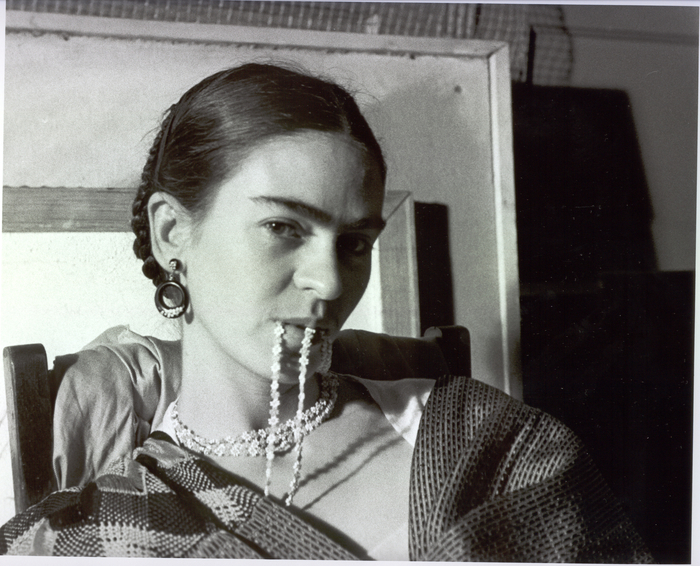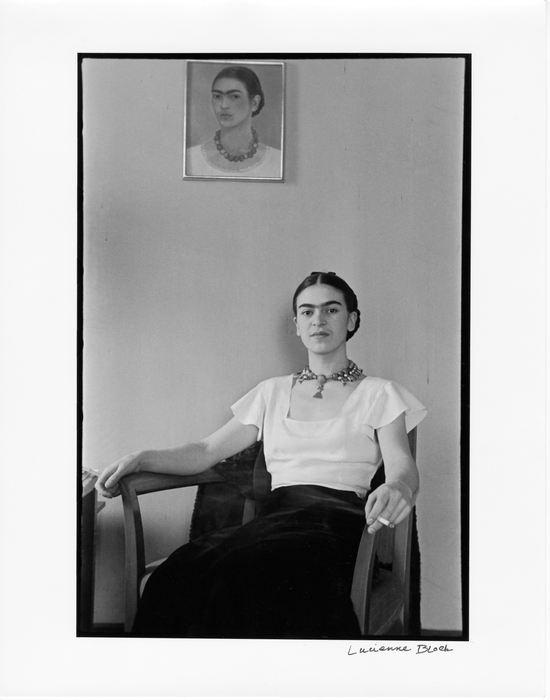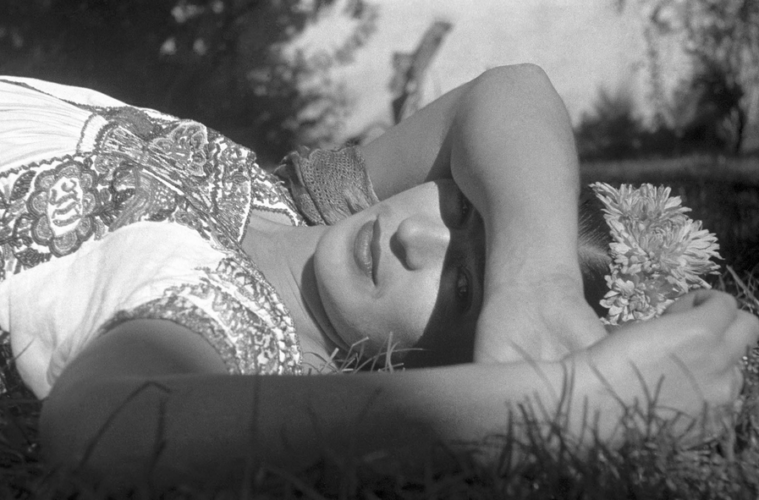If there were ever an artist who would be done with people telling her story for her, it would be Frida Kahlo. The rightfully iconic painter, feminist, activist, sister, daughter, wife, lover, and indomitable passionista was a fierce voice for herself, her country, her culture, and above all, the power of art to change the life of an individual and an entire community. The good news is, thanks to a new artist-driven documentary, we finally get to hear Frida’s story as it was meant to be heard—in her own words.
Releasing March 15 on Prime Video, FRIDA—the feature film directorial debut of acclaimed editor Carla Gutiérrez (RBG)—is packed with the kind of extensive archival photography, video, and audio along with contemporaneous media coverage that one would expect from a thorough documentary. But Gutiérrez and her talented team embed these primary source materials within a rich and beautifully acted voiceover read directly from Frida’s prolific diaries, along with a risky but ultimately delightful series of animations bringing motion and added drama to Kahlo’s most beloved images.

Frida Kahlo c 1940 (© Archivo Manuel Álvarez Bravo, S.C)
The artists behind the animation sequences are adamant about the love and respect for Frida that they held during the creative process. With no outside elements added to her paintings, the sequences most often took the form of watching a work being made by an invisible hand, or perhaps one element such as a snake sliding into place would move through the stationary parts to its final spot, completing the work. “First, we explored how to approach the artwork, taking it to its maximum expression in terms of meaning and color. I believe that each painting has extraordinary elements that highlight its feelings,” says artist Sofía Cáceres. Her colleague Renata Galindo adds, “We had to be very careful. Our first approach was to separate animation from Frida’s art because they are two different mediums.” In these elements the desired balance of whimsy and optical treat with respect for the original artworks was achieved with poetic appeal.

Frida in 1945 (Courtesy of Fundación-Leo-Matiz)
The charm of the animation gives expressive form to the often surprisingly intimate, personal, fiery, sensuous, emotional, political, psychologically fraught, steel-willed narration told in its unique first-person manner. Even those familiar with her illustrated diary might not have seen the trove of private letters, unpublished essays, and candid print interviews. Pointedly, the compelling voiceover performed by actress Fernanda Echevarría del Rivero is entirely in Spanish, drawing the viewer even closer to the sensation of hearing Frida herself in the words.
The filmmakers had unprecedented, unrestricted access to a global treasure map of rare archival materials, much of which had never been seen in public. We’re talking dusty boxes in Bay Area attics with partially transcribed cassette tapes from the ‘70s. “It was shocking for us to realize how much [Frida] could carry her own story because there haven’t been many interviews with her, but there are many letters,” Gutiérrez writes. “We had this opportunity to go much deeper and present the complicated, messy person she was outside the image or symbol she’d become.”
Producer Katia Maguire concurs, writing, “We wanted to bring her artwork to life in a way that we hadn’t seen done before. And we wanted to explore her writing. She was quite a prolific writer. She poured her heart into her correspondence with people because she was so intimate and so easily connected with people.”

Frida in 1933 (Photo by Lucienne Bloch, Courtesy Old Stage Studios)
“People that watched earlier cuts of the film were surprised by how humorous and deprecating she was,” Gutiérrez says. “Her sassiness when she was dealing with the world, especially in America, a lot of people enjoyed seeing that. Because she’s such an iconic symbol, in a way, she’s kind of a confined person. She is the symbol of female empowerment, or sometimes she’s the symbol of Latin sexiness. A lot of people thought about her as somebody that went through a lot of pain, and that’s how they know her. What’s exciting for me about coming into the premiere is seeing what new discoveries people will have of her because of the film.”
The research process discovered materials that had been in boxes for 40 or 50 years. Hayden Herrera, for example, who wrote the most important biography of Frida Kahlo, started her research in the 1970’s. She interviewed a lot of people who knew the artist extremely well at various times in her life and career. Gutiérrez discovered that all of Herrera’s original research was just sitting in boxes in her attic. They went and got it. They spoke with the grandson of Diego Rivera and one of Frida Kahlo’s great-nieces, Cristina. They went to San Francisco, where a pair of nonagenarian filmmakers who had made a film about Frida in 1976 provided a box of quarter-inch tapes that hadn’t seen the light of day in 40 years, and badly needed digitizing. Like that they were able to hear the full interviews.
“There’s been so much work on Frida, but this important research material has yet to be grabbed by anybody!” enthuses Gutiérrez, who is in awe that their “little film production” has been able to contribute such a monumental gift to art history—not to mention to new generations of viewers set to discover Frida anew or for the first time. ❖

Frida sitting with self-portrait, 1933 (Photo by Lucienne Bloch, Courtesy Old Stage Studios)
❖Editor’s note: The disclaimer below refers to advertising posts and does not apply to this or any other editorial stories.
Advertising disclosure: We may receive compensation for some of the links in our stories. Thank you for supporting LA Weekly and our advertisers.

